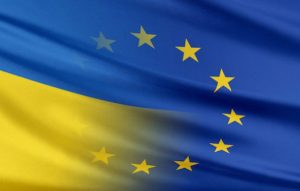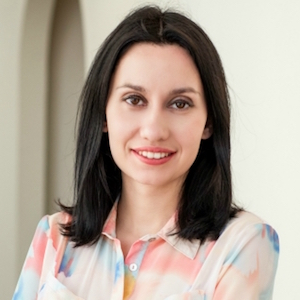 As of September 1, 2017, the Association Agreement between the European Union and Ukraine came fully into force. The document was approved by the European Parliament and the Parliament of Ukraine in 2014 and during the three years that followed, all the member states of the EU have ratified the signed document.
As of September 1, 2017, the Association Agreement between the European Union and Ukraine came fully into force. The document was approved by the European Parliament and the Parliament of Ukraine in 2014 and during the three years that followed, all the member states of the EU have ratified the signed document.
For three years Ukrainian legislative and executive authorities were obligated to implement the provisions of the Agreement in the national legislation, however much has not been done. As a result, the citizens and business in the Ukraine may face a dual interpretation of the same regulatory rules.
According to Ukrainian law, the agreements ratified by the Parliament have now become a part of the national legislation. That means that the signed Agreement between Ukraine and the EU became a part of the legislation of Ukraine starting September 1.
Whereas if the provisions of the European law differ from the national law, then the provisions of the Agreement should be applied.
And unfortunately, it will be the grounds for the emergence of legal problems and court proceedings.
The industrial designs
In the EU the possibility of temporary protection for the unregistered industrial designs for 3 years is provided. It is convenient for FMCG companies, seasonal products, or also for the producers of high-tech products (smartphones, smart watches, etc.). However, in the Ukrainian legislation, such mechanism is not provided at all.
To protect their rights in Ukraine companies firstly should file the application, wait for the design and then go into the market. In case of the infringement, the company will be able to go to court only if the protection for industrial design was granted.
Until such provisions will be duly implemented, the court will decide if there is the protection for the unregistered industrial designs or not. Herewith the term of the protection for the designs differ in Ukraine and the EU. In Ukraine, it is valid for 15 years since the day of filing the application with the obligation to pay the maintenance fee.
In the same time, the provisions of the Association Agreement indicates that the industrial design is protected for 5 years with the with the possibility of the renewal no more than 5 times. So the whole term of the protection of it is 25 years. Right now the several questions will arise for the design holders as to the maintenance of validity or renewal.
In accordance with the information available on the website of the Ministry of Economic Development and Trade of Ukraine, Ukrainian Patent Office is not ready for a five-year renewal. After all, the registers should work in a completely different way, there is the need both in different standard forms of documents and in the different types of documentation itself.
The trademarks
There is also the collisions as to the regulation of the trademarks.
According to the Law of Ukraine, there is the provision that if a trademark is not used within 3 years from the date of registration, any interested person may file a claim for the cancellation of it. But, in the EU this term is 5 years.
This also can lead to disputes for the companies that go into the market with a trademark, which is similar to trademarks which were registered earlier in Ukraine. In the court proceedings, the claimant may refer to a three-year period under the legislation of Ukraine, and the defendants can refer to the Association Agreement, where another term is prescribed. Therefore there will be questions for the court to decide.
It is desirable to see the updated legislation and explanations from the authorized governmental bodies as to what is working in Ukraine and in which part and how it will be implemented.
New rules for the IT sector
The Agreement also regulates the tangible rights of the employers and employees for the intellectual property objects.
In accordance with the Civil Code of Ukraine, the right for the developed computer program, for example, may belong both to the employee and the employer, unless otherwise is provided by the contract.
This provision complicates the work of the companies, which have the IT-department or work with the computer program developers for their purposes. The employers have to do a lot of paperwork, sign with every employee the agreement where the tangible rights are secured for the companies. But it is not enough just to sign the agreement, but also to have proofs that the fact that a particular source code was developed by the employee within the framework of the work assignment and performance of his labor duties. Often employees, especially after their dismissal, referring to such norms, dispute the transfer of their rights and may accuse the companies in the infringement of their tangible rights.
It will be harder to manipulate with it after September 1. In the Agreement the provision as to the computer programs is regulated separately. As to the article 181 of the Agreement, during the development of the computer programs by an employee within the framework of the task from the employer, all tangible rights belong to the employer, unless otherwise provided by the contract.
That’s why it will be easier for the companies related to IT to do business.
Conclusions
It is necessary to adopt at least a subordinate regulatory framework where clear answers will be given to business entities. For example, whether an unregistered industrial design is protected in Ukraine or how design holders should act as to the maintenance of the design or the renewal of it according to European practice.
It will be complicated for the companies to compare the European and national legislation, which can lead to the loss of time, incomprehensible risks and uncertainty. The companies will not be able to plan their actions properly in accordance with the clear regulation. And this leads to obscurity and the lack of predictability.
With the Agreement in force without implementing Ukrainian legislation companies can approach the interpretation of European and national law in two ways. Competing companies can, and likely will, differ in their approach to and interpretation of certain provisions and they will have to fight their disputes in court.
It is impossible to predict what kind of court practice will be. Uncertainty is added by the protracted process of formation of a specialized court in the sphere of intellectual property, which, according to the judicial reform, should be launched in 2017.

![[IPWatchdog Logo]](https://ipwatchdog.com/wp-content/themes/IPWatchdog%20-%202023/assets/images/temp/logo-small@2x.png)

![[Advertisement]](https://ipwatchdog.com/wp-content/uploads/2024/04/Patent-Litigation-Masters-2024-sidebar-early-bird-ends-Apr-21-last-chance-700x500-1.jpg)

![[Advertisement]](https://ipwatchdog.com/wp-content/uploads/2021/12/WEBINAR-336-x-280-px.png)
![[Advertisement]](https://ipwatchdog.com/wp-content/uploads/2021/12/2021-Patent-Practice-on-Demand-recorded-Feb-2021-336-x-280.jpg)
![[Advertisement]](https://ipwatchdog.com/wp-content/uploads/2021/12/Ad-4-The-Invent-Patent-System™.png)







Join the Discussion
One comment so far.
angry dude
October 4, 2017 09:27 amDear Masha,
“ukrainian patent” is an oxymoron
same goes for russia and soon for usa